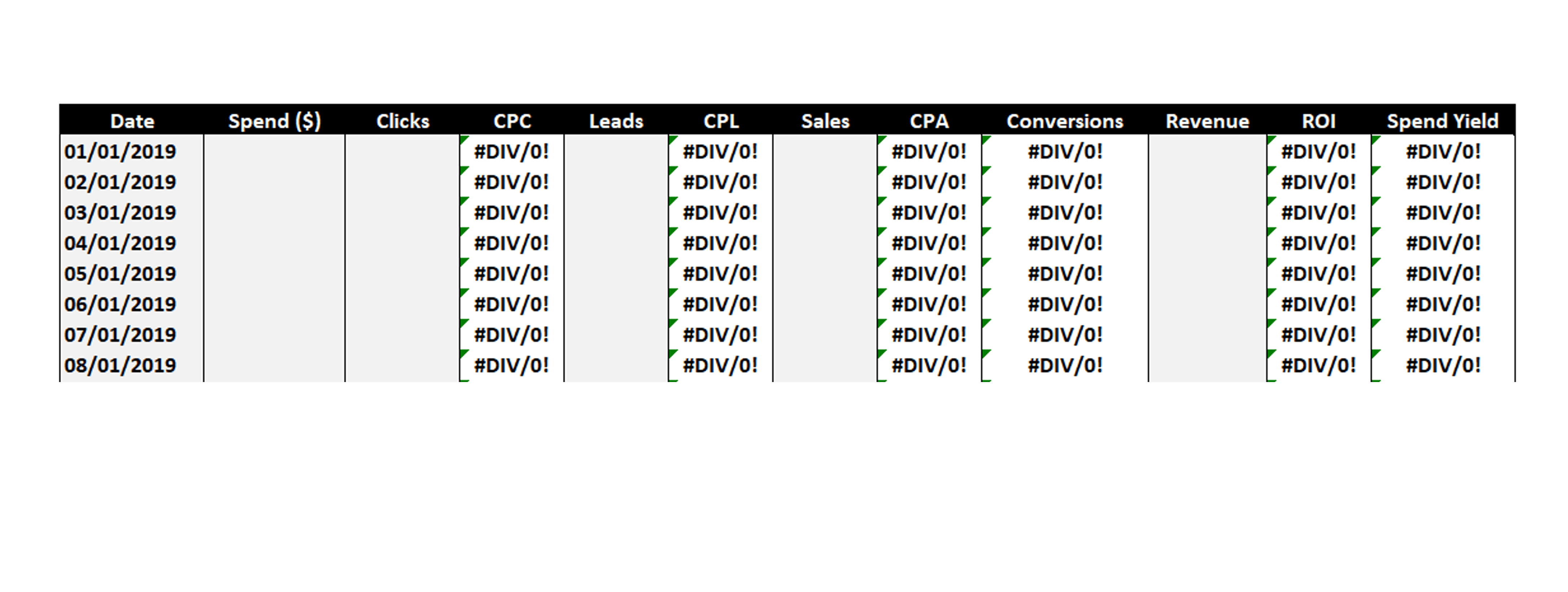Marketing KPI's and How To Use Them
Business is all about numbers: what you get out should be consistent with what you put in. However, life has a habit of not working-out the way you expect it to.
Anyone who’s run a marketing campaign before knows that…
However, there are a few basic maths tricks that can be used to make informing strategy easier, and to help allocate marketing budgets more effectively.
What Are KPIs
KPIs (Key Performance Indicators) allow us to compare actual performance to pre-determined benchmarks, in order to gauge the success of a certain action.
KPIs tend to be in the form of percentages or ratios, as this will reduce the bias inherit in judging things in absolute terms.
For example, if last month we made $2,000 in revenue, and this month we made $4,000 – in absolute terms, this month we’ve “done better”.
However, let’s assume last month our marketing spend was $1,000, and this month it was $2,200. Our ROAS was 100% and 81% respectively – in performance terms, we did better last month.
By deploying certain metrics, we can go a few levels deeper.
Why did our ROAS drop by 19%?
What can we do to get back to a healthy/better performance level?

The Three Most Important Metrics
In practice, KPIs can be set at every level of your customer journey (in order to benchmark performance) – however, to keep this post lean and brief, we’re just going to focus on three of the more important metrics:
… Cost per Click (CPC)
… Cost per Lead (CPL)
… Cost per Acquisition (CPA)
That being said/written, use the basis for these formulas to calculate performance at any given level of your funnel – the principles are fundamentally the same.

Collecting The Data and Setting KPIs
In order to work-out the KPIs mentioned above you will need to collect the marketing and funnel data obtained from:
… your marketing platform
… your lead capture platform (for example, the email responder that captures your email sign-ups)
… your checkout software or payment processor
To keep things orderly, organise the data in an excel sheet that can be used to track the data daily. This will help centralise said data, and aid in the inference stage
(reach out to me – I have a KPI calculator that makes working out these benchmarks easier)

Drawing Inferences
As with everything, the more data points you have, the more concise the inferences drawn from the data will be.
By inputting the data every day this can be accomplished.
Remember, as KPIs are benchmarks, they should not be considered “objectives” – they are boundaries, here is a general guide as to how you can read calculated daily data

How to Use Them Moving Forward
We know your CPC, CPL, and CPA results are not goals, but what exactly does the number we get tell us?
Essentially it is the average cost of getting that action – of course, as with any cost, we need that number to be as low as possible, because that means we are getting more for our budget. If the number is lower than our KPI (calculated using the provided sheet), we are doing well: our ads are converting better than expected, our lead capture page is solid, and our offer is strong enough to convert more of a given audience than we first anticipated.
The reverse is true if our average costs are higher than the KPI:
… our ads are not doing as well as we would like
… our lead capture is not as strong as it should be
… our sales process or offer is weak
As such, the date should guide what action we take if our average costs are rising:

Final Thoughts
The above is a basic guide to some of the key KPIs/metrics you should be looking at – they are by no means the only metrics.
The truth is, marketing metrics is a deep topic area and a 500 word blog post is not long enough to cover the entirety of this topic.
However, with the tools provided to you here, you are grounded to start baking in KPIs and data capture into your marketing strategy.
FYI – if you are looking to source funding for your campaigns – this process is not only a must, but shows your “investors” that you are a competent and thorough operator.
But, more on that at a later date.
